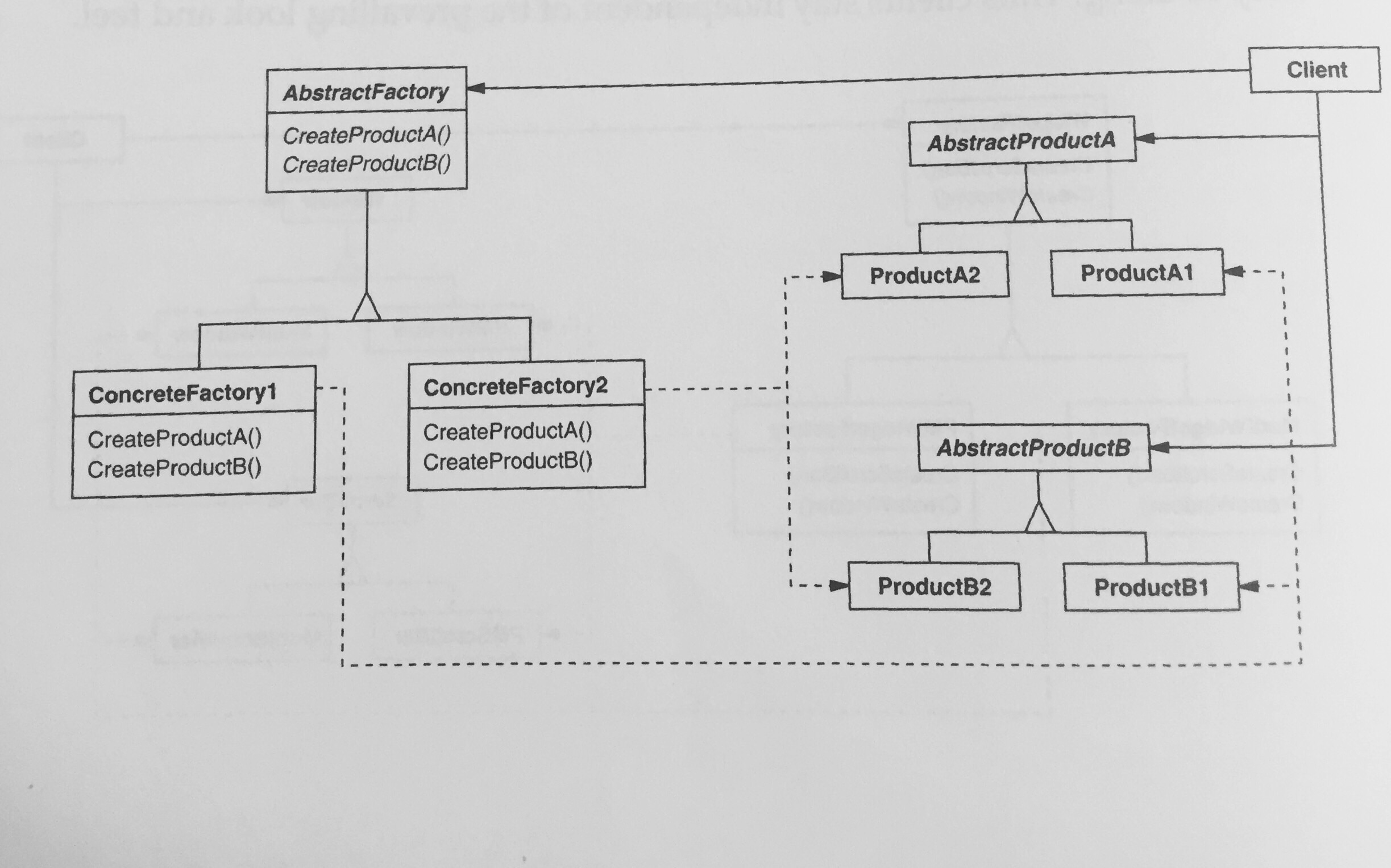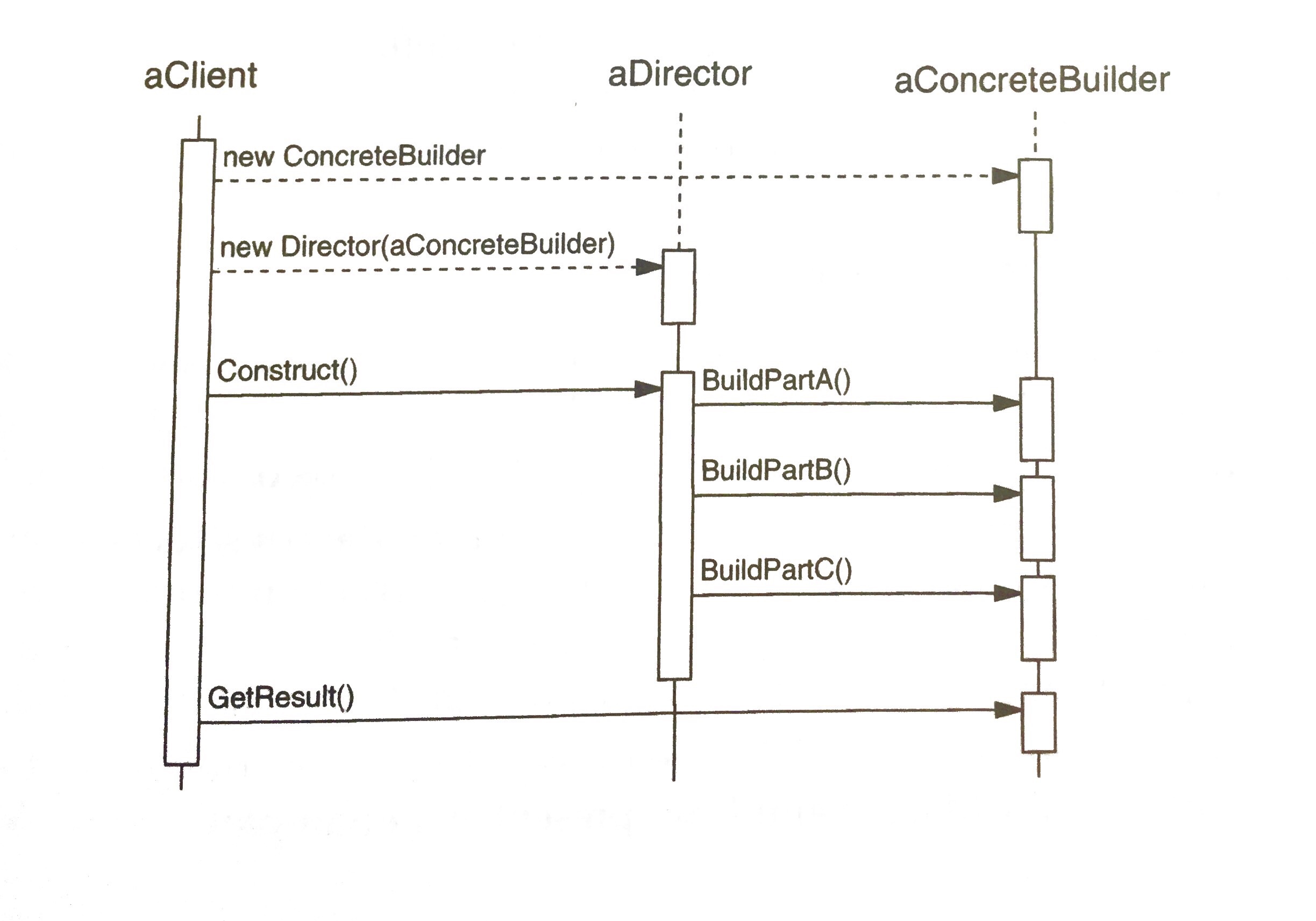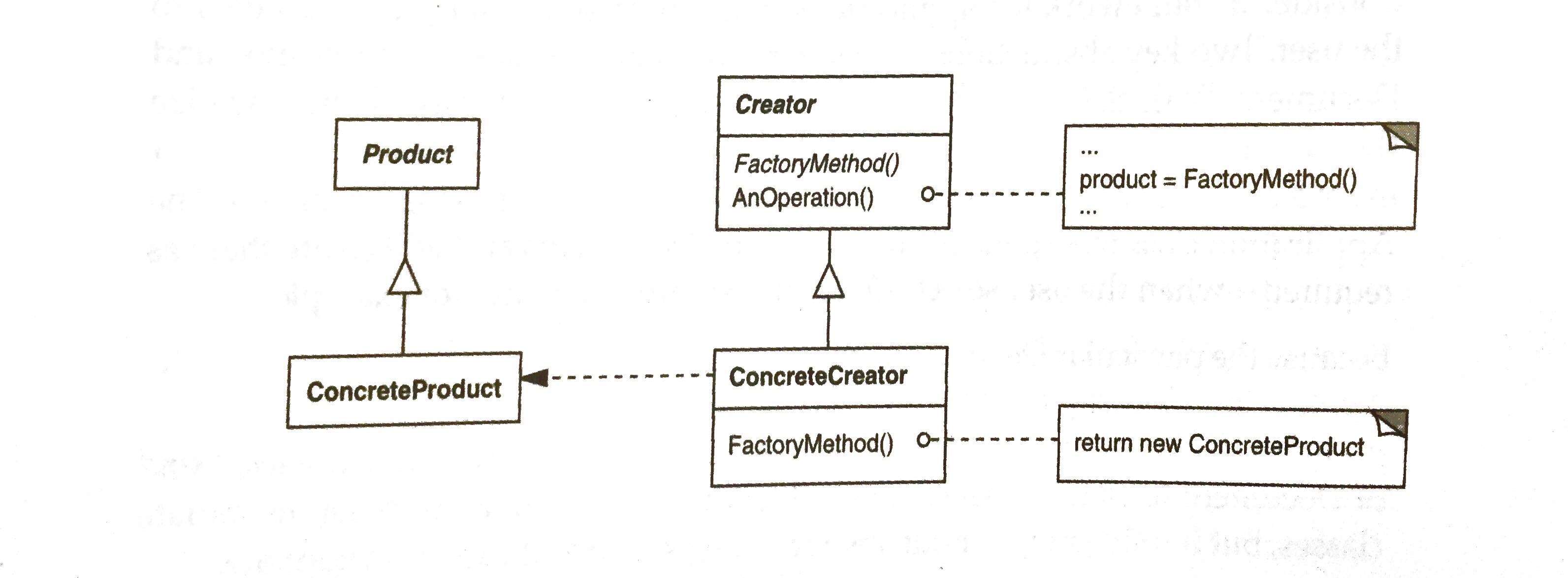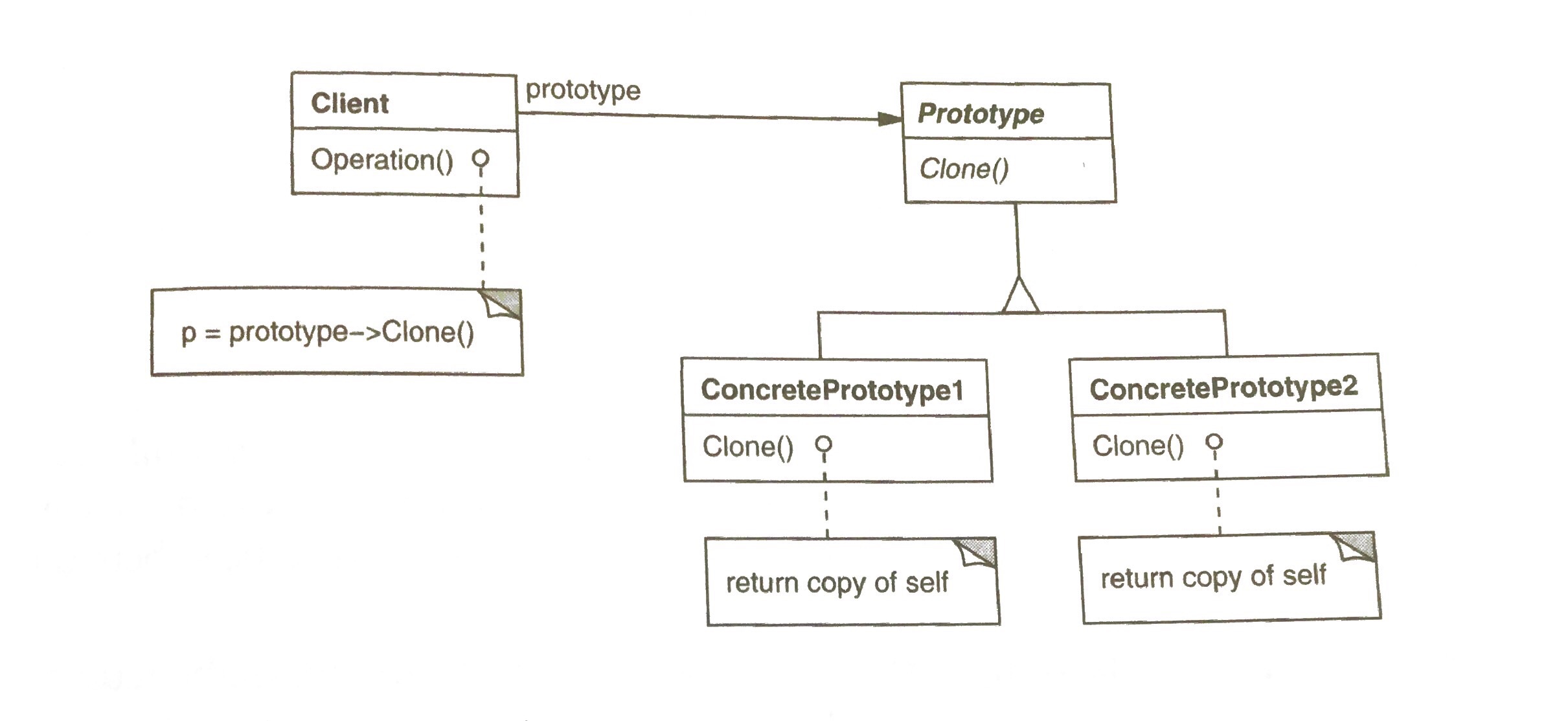ABSTRACT FACTORY
Provide an interface for creating families of related or dependent objects
Scenario
- Client should behavior the same regardless of how its products are created, composed.
- UI application doesn’t care about how the button is rendered in Windows vs. OS X as long as they provides same interface
- Client can just change the ConcreteFactory to adopt the app to new behavior
Participants
- AbstractFacory
- declares an interface for operations that create abstract product objects
- ConcreteFactory
- implements the operations to create concrete products
- AbstractProdcut
- flares an interface for product
- ConcreteProduct
- implement AbstractProdcut Interface
- define the product created by concrete factory

Example
MazeGame game;
BombedMazeFactor factory;
game.CreateMaze(factory); // internall, use the facotry.MakeRoom/MakeWall, etc to create the game
BUILDER
Separate the construction of a complex object from its representation so that the same construction process can create different representation.
Scenario
- Construction process must allow different representations for the objects that’s constructed
- The algorithm for creating a complex object should be independent of the parts that make up the object and how they’re assembled
- Maze game can be built with same steps but different type of rooms/wall blocks
Participants
- Builder
- define the abstract interface for creating parts of the product
- ConcreteBuilder
- implement the Builder Interface
- define and keeps track of the representation it creates
- provides interface for retrieving the products
- Director
- algorithm/steps to build the products with the builder

Example
Maze *maze;
MazeGame game; // director
StandardMazeBuilder builder; // builder
game.CreateMaze(builder);
maze = builder.GetMaze();
FACTORY METHOD
Define an interface for creating an object, but let subclass decide which class to instantiate. It uses subclass/inheritance to solve the problem of creating different instances.
Scenario
- class doesn’t know the objects it must create
- App needs to create documents but it doesn’t know the type of the document
- Some UserApp class needs to inherit base App class and overwrite the method on processing the documents
Participants
- Product
- define the interface of the object that the factory method creates
- ConcreteProduct
- Implement the product interface
- Creator
- define factory method which return an object of type Product.
- ConcreteCreator
- overwrites the factory method to return the real instance of ConcreteProduct9kikk

Example
class MazeGame {
public:
Maze* CreateMaze(); // game gets created here
// factory methods:
virtual Room* MakeRoom(int n) ...
virtual Wall* MakeWall...
}
class BombedMaze : public MazeGame {
public:
virtual Wall* MakeWall() {
return new BombedWall;
}
}
PROTOTYPE
Give the client a prototypical instance. Client can use clone to create their own copy and start using the object.
Scenarion
- Create an object has high cost
- i.e., create a lot of IOs, complex algorithm, etc. Clone will be cheaper at this point
- A class only have a few different possible state.
- cheap to load it than creating from scratch
- classes needs to instantiate type of objects at run-time
- dynamic loading
Participants
- Prototype
- clears an interface ==> Clone()
- ConcreatePrototype
- implement clone

Implementation
Can have a prototype manager to save all existing prototype and when client asks, just find it from the registry.
Example
class MazePrototypeFactory {
public:
MazePrototypeFactory(Wall*, Room*, Door*);
Wall* MakeWall {
return _prototypeWall->Clone();
}
}
MazeGame game;
MazePrototypeFactory MazePrototypeFactory(new BombedWall, new RoomWithABomb, new Door);
Maze* maze = game.CreateMaze(bombedMazeFactory)
SINGLETON
Ensure a class only has one instance and provide a global point of access to it.
Scenario
- there must be exactly one instance of a class and it should be shared between different clients
- one window manager, one file system
Implementation
- consider having a registry for singleton lookup
- python singletonmixin
